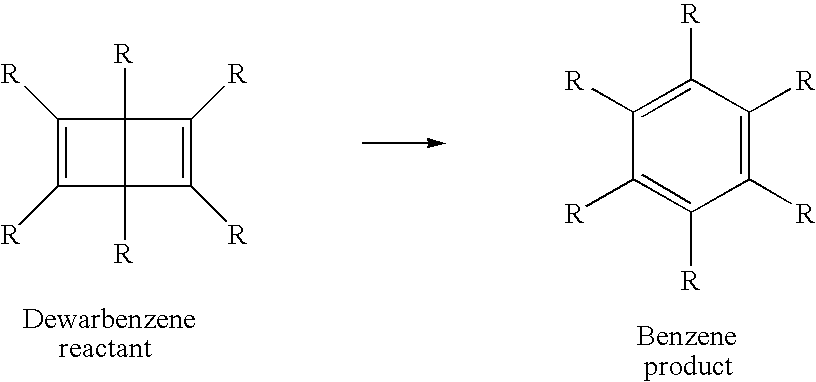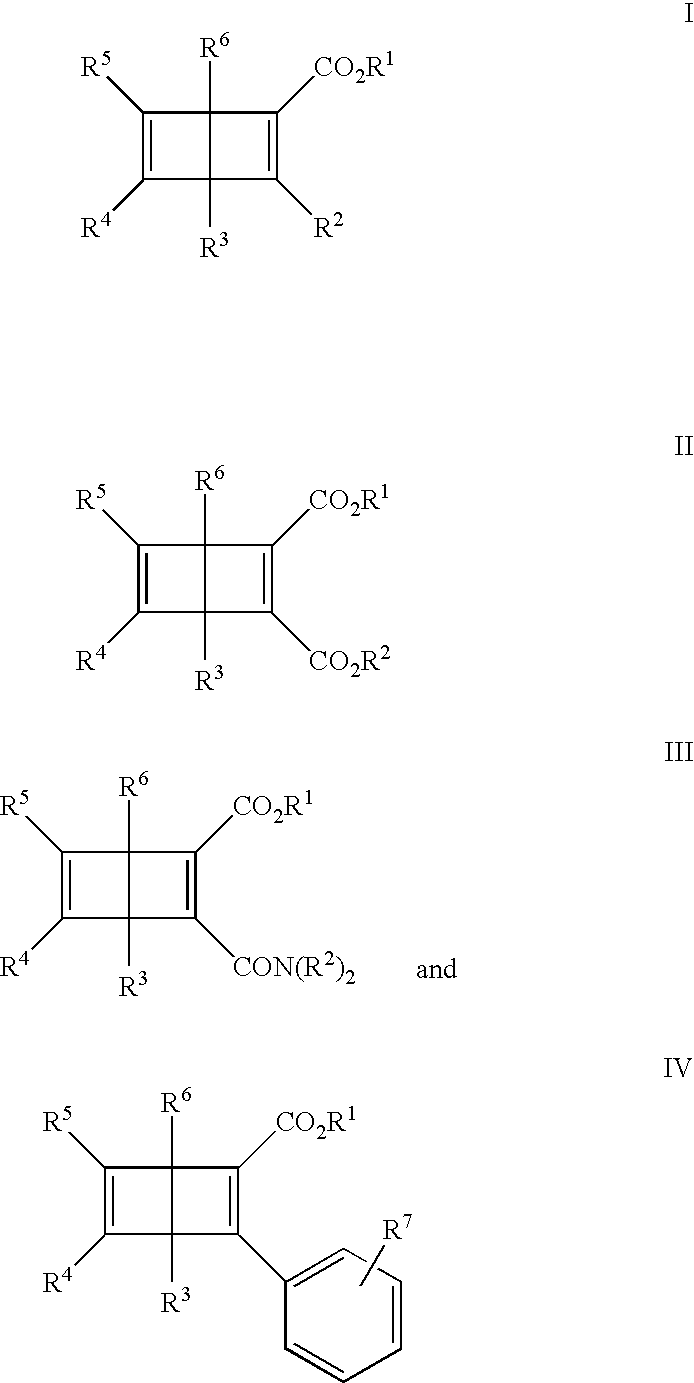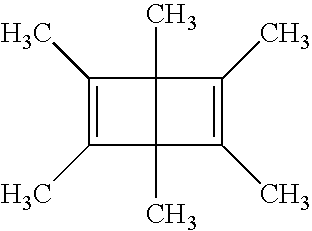Optical recording media with triplet-sensitzed isomerization
a technology of optical recording media and isomerization, applied in the field of optical recording materials, can solve the problems of insufficient data access rate, prohibitively expensive required equipment, and limited storage capacity of the total disk, and achieve the effects of reducing exposure time and/or light intensity, reducing the storage capacity of the optical recording material, and high quantum efficiency
- Summary
- Abstract
- Description
- Claims
- Application Information
AI Technical Summary
Benefits of technology
Problems solved by technology
Method used
Image
Examples
example 1
Illustration of Optical Recording Elements of the Invention and Improvements in Quantum Yields and Percent Conversions with Various Cosensitizers
[0115] Solutions containing 100 mg of dewarbenzene R-6 (10%), 50 mg (5%) of additive (see Table 4), 5.8 mg of sensitizer S-2, and 850 mg of poly(methyl methacrylate) (PMMA) in 4.0 mL of dichloromethane were prepared and filtered through a 0.45 μm polytetrafluorethylene membrane. The solutions were coated on poly(ethylene terephthalate) support at 25° C. using a 127 μm coating knife. The samples were air-dried for 15 min and then at 40° C. for 17 h in a vacuum oven. The dried films were 23±2 μm thick. The optical densities at 405 nm were in the range of 0.4 to 0.5. The films were irradiated for 1, 2, 4, 8 and 30 min using strongly defocused light from a high-pressure Mercury lamp filtered through Coming 5-58 and 3-75 broad band and cutoff filters and through a 404.7 nm interference filter. The irradiated films were then extracted with tetra...
example 2
Illustration of the Effect of Dewarbenzene Reactant Concentration on Isomerization Quantum Efficiency
[0117] Films containing various amounts of reactant R-6 together with sensitizer S-8 were prepared similarly to Example 1. The total weight of R-6 plus PMMA in the coated solutions was kept constant at 1.000 g / 4.0 mL of dichloromethane. The film samples were coated, dried, irradiated and analyzed as in Example 1. The amounts of R-6 and the measured relative quantum yields of isomerization are listed in Table 5. The data illustrate the substantial increase in isomerization quantum efficiency as the reactant concentration is increased.
TABLE 5R-6 (g / 1.000 g Total)Efficiency0.0160.070.0800.660.100(1.00)0.1602.040.2002.85
example 3
Illustration of the Effect of Dewarbenzene Reactant Concentration on Isomerization Quantum Efficiency with Added Plasticizer
[0118] Films containing various amounts of reactant R-6 together with sensitizer S-2 and plasticizer dibutyl phthalate were prepared similarly to Example 1. The total weight of the three coated components was held constant at 1.000 g / 4 mL of dichloromethane solvent. The films were coated, dried, irradiated and analyzed as in Example 1. The coated amounts of R-6 and dibutyl phthalate and the relative efficiencies of isomerization are listed in Table 6. These data illustrate that the effect of reactant concentration is more than just a plasticization effect.
TABLE 6R-6 (g / 1.00 gTotal)Dibutyl Phthalate (g. / 1.00 g)Relative Efficiency0.050.10(1.0)0.100.052.20.150.003.4
PUM
 Login to View More
Login to View More Abstract
Description
Claims
Application Information
 Login to View More
Login to View More - R&D
- Intellectual Property
- Life Sciences
- Materials
- Tech Scout
- Unparalleled Data Quality
- Higher Quality Content
- 60% Fewer Hallucinations
Browse by: Latest US Patents, China's latest patents, Technical Efficacy Thesaurus, Application Domain, Technology Topic, Popular Technical Reports.
© 2025 PatSnap. All rights reserved.Legal|Privacy policy|Modern Slavery Act Transparency Statement|Sitemap|About US| Contact US: help@patsnap.com



